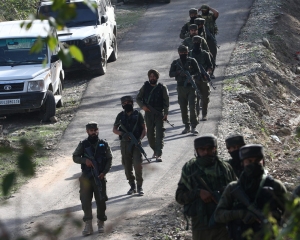Environment Minister Gopal Rai conducted a demonstration on Friday showcasing drone-based services to identify sources of pollution in the hotspot areas, aiming to leverage modern technology for effective pollution control. The air quality index stood at 270 as against 386 on Thursday, as the transport sector contributed 16 percent air pollution.
He also stated that if this pilot is successful, improvements will be made in the highly polluted regions. During the demonstration held at Wazirpur, one of the city's pollution hotspots, Rai discussed the recently released 21-point Winter Action Plan designed to tackle various pollution sources, including dust, vehicle emissions, and open burning.“Drone mapping was conducted on Friday at the Wazirpur hotspot by a listed agency of Survey of India. The goal is to maximise the use of modern technology to combat pollution effectively,” he said, adding that as part of the pilot project, the drones operated at a height of 120 metres, covering a 200-metre radius, and transmitted data on various pollution sources to the Environment Department and DPCC.
“Engineers from both agencies will analyse this data and submit a report, which will inform further actions for pollution control. If the pilot project proves successful, drone mapping will be extended to other hotspots across the city,” he shared.
He urged residents to actively participate in pollution reduction efforts and said, "The Delhi government is working tirelessly, day and night, to combat pollution. Today's demonstration is part of a broader strategy to monitor 13 hotspots known for their significant pollution impact," he said.
Additionally, Rai acknowledged recent improvements in air quality attributed to strong winds dispersing pollutants.
Meanwhile, Municipal Corporation of Delhi (MCD) Mayor Shelly Oberoi shared that Delhi’s war on pollution has intensified as 372 surveillance teams, 1,295 officers, and a fleet of anti-smog guns hit the streets in a no-tolerance crackdown on road dust and pollution.
“The MCD’s total road length in Delhi is approximately 15,500 kilometers, with around 57,000 sanitation workers manually sweeping these roads. Additionally, the MCD has deployed 52 mechanical road sweepers, 195 water sprinklers, jetting machines, and 30 Anti-Smog guns, especially in hotspot areas identified by the DPCC,” she added.
Oberoi said, “Zonal DCs have been appointed as nodal officers for all these hotspot areas. There are 612 sites registered on the DPCC web portal, which are regularly monitored by zonal teams. Furthermore, there are 106 designated MCD sites for dumping C&D waste. Of these, 55 sites are covered with barricading sheets, and the waste is sent to C&D plants for scientific processing.”























